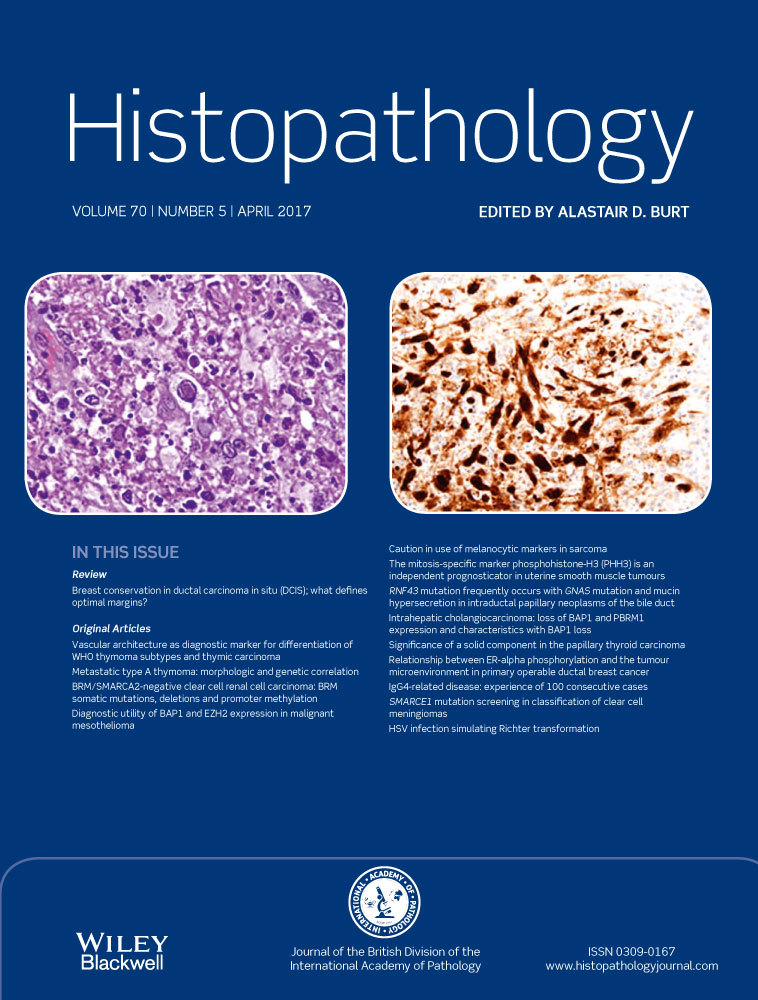Vascular architecture as a diagnostic marker for differentiation of World Health Organization thymoma subtypes and thymic carcinoma
Abstract
Aims
Thymomas and thymic squamous cell carcinomas (TSQCCs) are rare thymic epithelial tumours. Data on angiogenesis and vascular phenotype in these tumours are limited, and no study has taken histological World Health Organization (WHO) subtypes into account. The aim of this study was to compare vascularization, pericytes coverage and expression of angiogenic growth factors in different WHO-defined subtypes of thymoma
Methods and results
Vascular density, diameter and architecture and expression of α-smooth muscle actin (SMA), platelet-derived growth factor (PDGF) receptor-β (PDGFRβ), vascular endothelial growth factor (VEGF) receptor 1 (VEGFR1) and VEGF receptor 2 (VEGFR2) were investigated in WHO type A, AB, B1, B2 and B3 thymomas and TSQCCs, by the use of immunostaining, quantitative morphometry, and tumour vessel isolation by trypsin digestion. Expression levels of angiopoietin 1 (Ang-1), angiopoietin 2 (Ang-2), VEGF-A, PDGF-B and Hif-1α were examined by quantitative reverse transcription polymerase chain reaction. A and AB thymomas were characterized by a dense network of capillary-like vessels with tight pericyte coverage, whereas B thymomas showed a loose vascular network with increasing vascular diameters and increasing expression of SMA and PDGFRβ from B1 to B3 thymomas and TSQCCs. VEGFR1 and VEGFR2 were expressed in vessels of all analysed tumour entities, and at higher levels in epithelial cells of A and B3 thymomas and TSQCCs. mRNA of Ang-2, but not of Ang-1, was significantly up-regulated in all thymoma subtypes, with the highest levels being found in A thymomas. In TSQCCs, Ang-1 and VEGF were the predominantly up-regulated growth factors. Hif-1α was only up-regulated in B3 thymomas and TSQCCs.
Conclusion
Thymomas and TSQCCs differ significantly in their vascular architecture and expression of key angiogenic growth factors. The findings could help to improve the differential diagnosis of difficult-to-classify thymic epithelial tumours, and indicate different mechanisms of tumour angiogenesis and functional differences of tumour vessels of major thymoma subtypes and TSQCCs.




